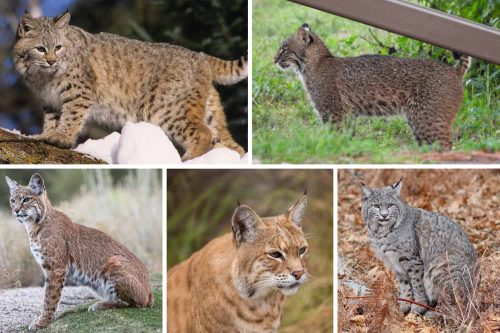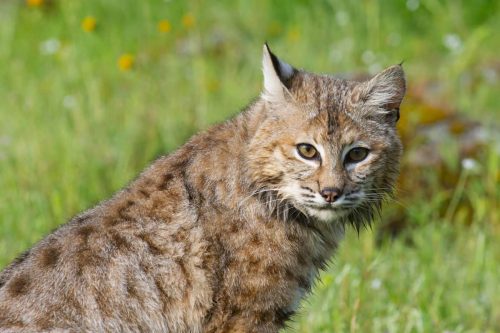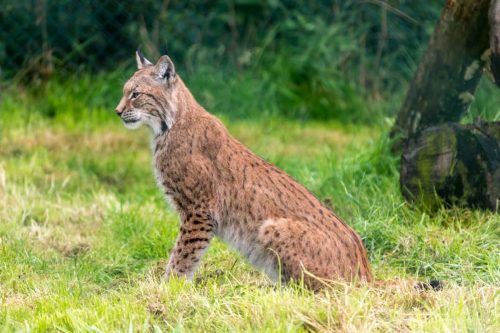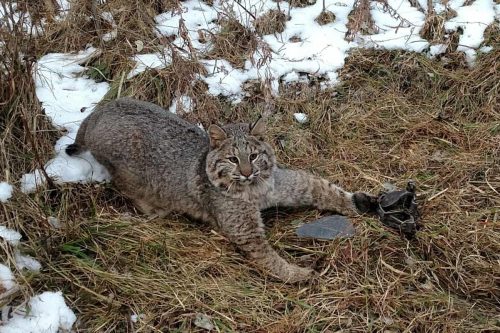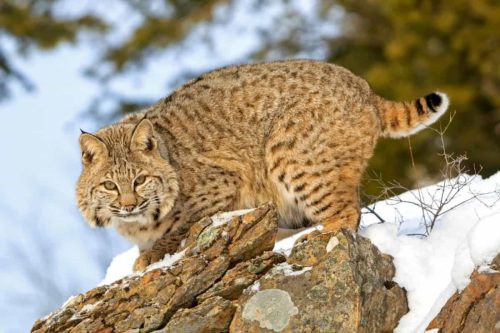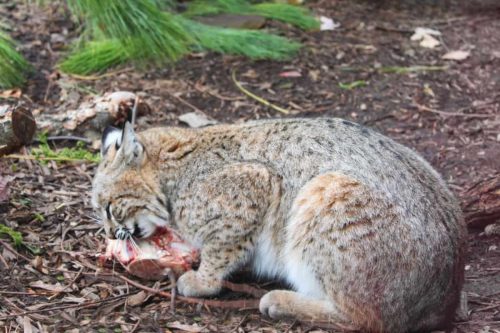Bobcats In New Jersey: Exploring The Elusive Wild Cats Of NJ
Bobcat is a medium-sized wild cat that is almost 2 feet tall and doubles the size of a house cat but it is smaller than big animals like lions and cougars. There is a good population of bobcats in New Jersey. These bobcats vary in terms of their fur color which is in the range from yellowish brown to reddish brown along with markings and stripes. These cats have tuft ears and bobbed tails with a black tip at the end. They exhibit both nocturnal as well as crepuscular behavior. That’s why you can see them hunting at both dawn and dusk.
Bobcats are the most common wild cats in the USA. Most of the states have a very stable population of bobcats. These cats also thrive and prosper well in their local habitats. It is even allowed to hunt these cats legally in some states due to the very large population of these cats in these states. In some states, the population of bobcats is also decreasing very rapidly and these cats are considered endangered in these states. In this article, we are to go to discuss in detail the status of the bobcat of New Jersey.
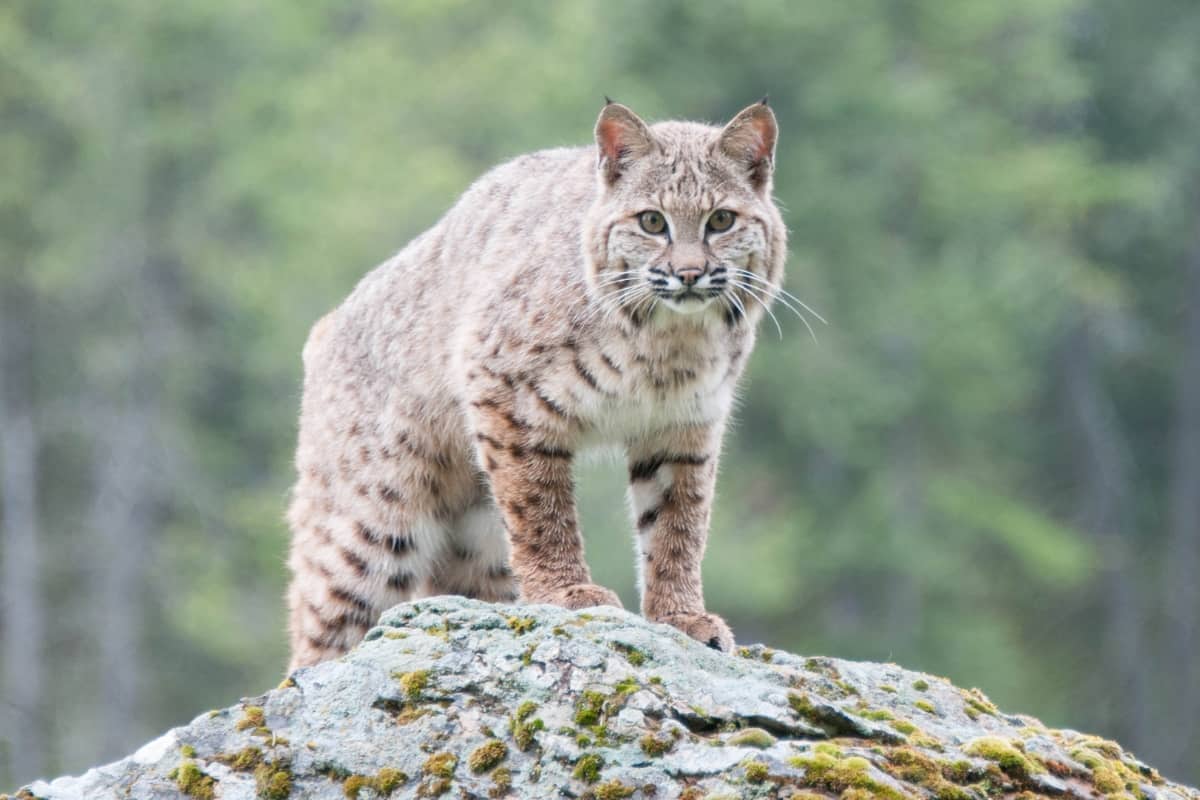
Contents
- Ecology of New Jersey
- Are there bobcats in New Jersey?
- Historical presence of bobcats in New Jersey
- The population of bobcats in New Jersey
- Where do bobcats live in New Jersey?
- Bobcats of North Jersey
- Main threats to the population of bobcats in New Jersey
- Steps That were taken for the conservation of bobcats in New Jersey
- Frequently asked questions
- Conclusion
Ecology of New Jersey
New Jersey has a highly dense population of human beings as well as wild animals. Since the second half of the 20th century, sub-urbanization has been done on a very large scale in this state. The geography, topography, and ecology of this state vary on a very high level as we move from north to south and vice versa in this state.
On the southern side, you can witness less density of population and a mixture of pine and oak forests while the northern side is fully wooded and mountainous. The state is boast of its biodiversity. You can find almost 20 species of marine animals in the coastal areas of New Jersey as well as forty land mammal species. Despite having a large population of bobcats in the northern part of New Jersey, you can seldom see these cats as these cats are very shy by nature.
Are there bobcats in New Jersey?
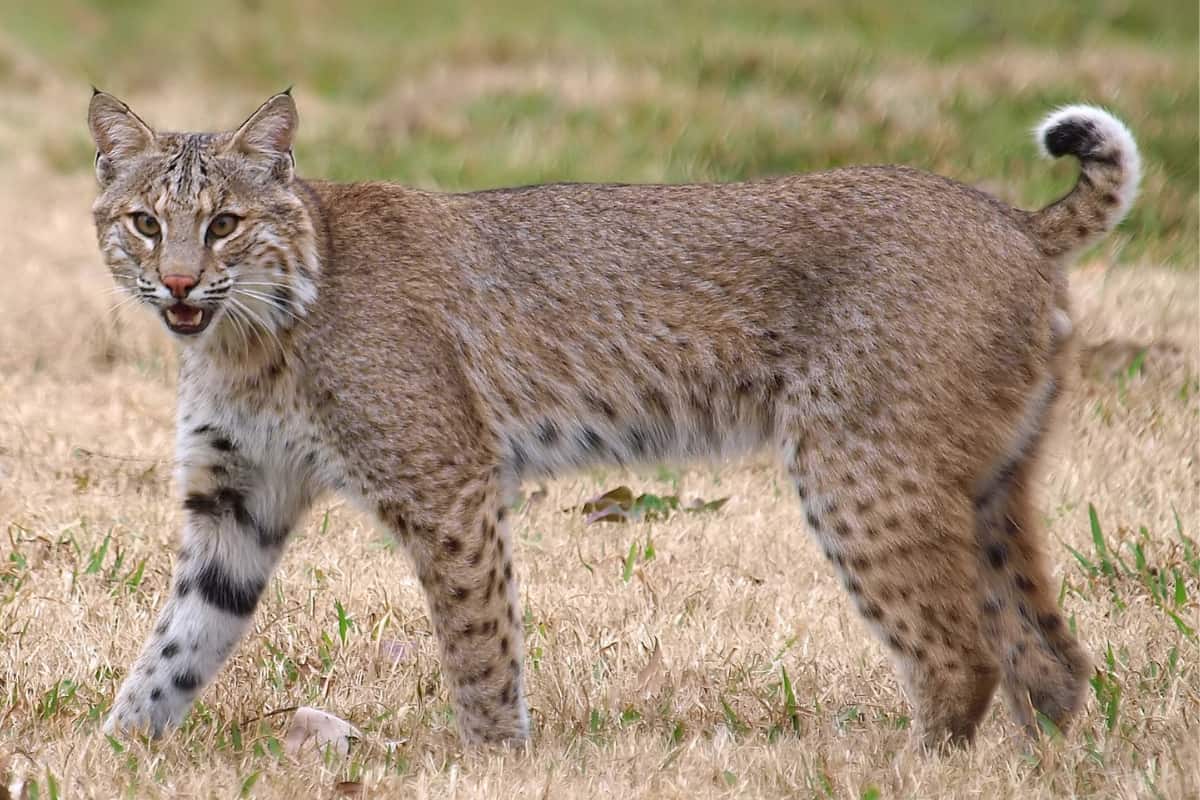
Yes, bobcats are present in New Jersey. You can find these cats in almost every county of New Jersey. It is the largest wild cat in the state. The population of the bobcat had been declining since the 1800s as the natural habitat of the bobcats had been destroyed due to the cutting down of trees, and clearing of land for agricultural purposes and human settlements.
Throughout the era of 1950s and 60s, bobcats were being hit and killed on a very large scale on highways. By the early 1970s, the bobcats had almost become extinct in the state of New Jersey. In 1991, the population of bobcats has been declined to such a low level that the cat has been declared an endangered species in New Jersey State.
Nowadays, the population of bobcats in northern New Jersey is again on the rise but there are still few sightings of the bobcat in the southern and central regions of the New Jersey state. It has been roughly estimated that there are almost 300 bobcats currently available in New Jersey. However, it is still considered an endangered cat of the region.
Historical presence of bobcats in New Jersey
Historically, bobcats have a very stable and consistent population throughout New Jersey State. You can witness these cats in almost every county of New Jersey. Since the increasing intensity of human hunting and settlement, the population of bobcats has been continuously declining and it has reached a very alarming level. Early European settlers had been trapping and killing these cats for getting their fur.
At the start of the 20th century, deforestation was done on a very large scale to get more Land for agricultural purposes and also utilize trees as a source of fuel. These steps have disrupted the overall habitat of the bobcats. In the end, the final blow was given in the form of large-scale human settlements by constructing roads and houses in the areas of the bobcats.
Since the 1980s, some new steps were taken for the restoration of the bobcat population in New Jersey. In this regard, 24 bobcats were introduced in New Jersey after capturing them from Maine state for the restoration of their natural ecosystem. Since then, the population of the bobcat is gradually restored especially in the Northern side of the state. However, there are still many incidents of killings of bobcats on the roadsides.
The population of bobcats in New Jersey
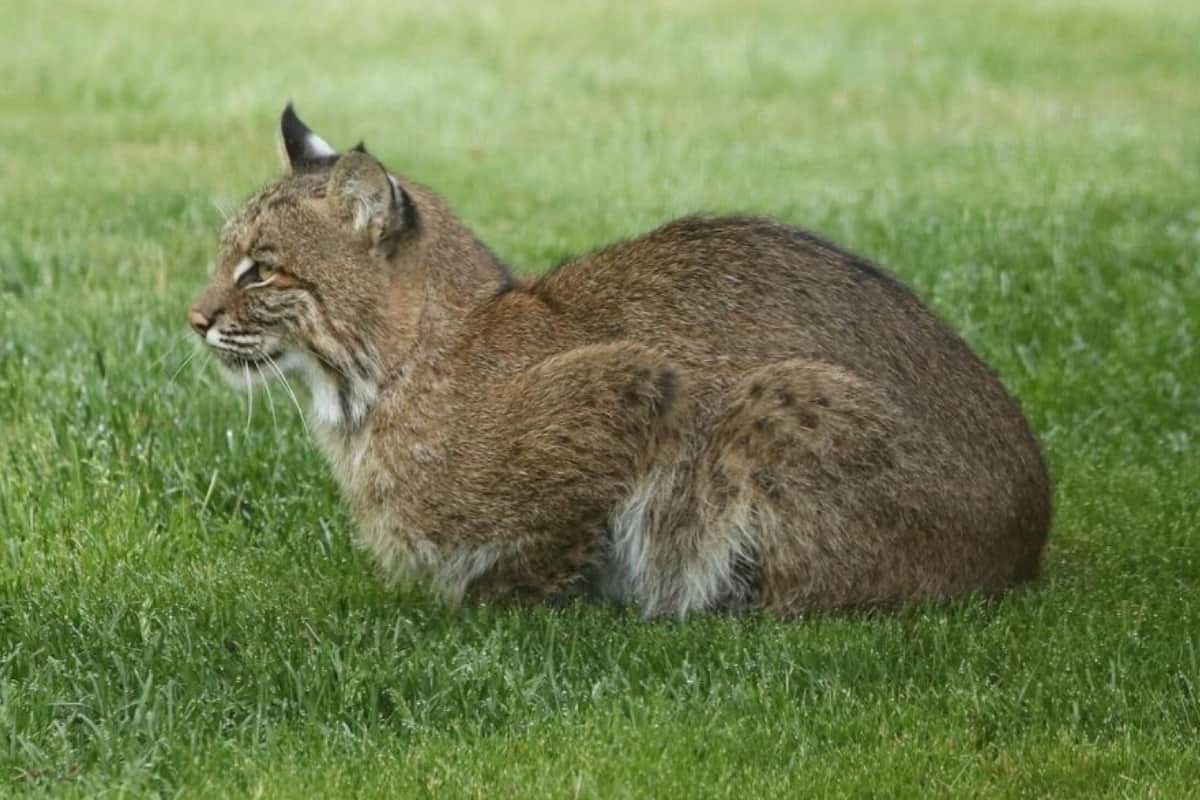
It is extremely difficult to find out the exact population number of the bobcats due to their peculiar nature as these cats have a very elusive nature and are also capable of acting as both nocturnal as well as crepuscular. However, it has been roughly estimated that there are almost 300 to 400 bobcats present in New Jersey overall.
The population of the bobcat has also been increasing slowly and gradually. Nowadays, bobcats are mainly killed by road accidents as they wander across the roads to keep themselves safe from human beings and other predators. In 2019, the highest number of bobcats almost 15 were killed by vehicles on the road. Most of these road-hit cats are bobcat kittens as they come out in search of food or are left behind by their mothers.
Also, read our article for bobcats in Montana.
Where do bobcats live in New Jersey?
Bobcats are mainly found in the Northern counties of New Jersey. Once upon a time, there was a very stable population of bobcats in almost all the counties like Mercer, Bergen, and Hunterdon. But it has been declining since the early 1900s due to large-scale deforestation under the garb of farming and development.
Nowadays, few sightings of bobcats were noted in these states which indicates the revival of the bobcat population in these states. However, most of these cats are still found in Northern Counties like Passaic, warren, Sussex, and Morris.
Bobcats of North Jersey
In 1991, there were very few bobcats left in New Jersey. It was declared the endangered species of the state. Some serious conservation steps were also for the quick recovery of bobcats in the region. Nowadays, bobcats are again rebounding in New Jersey but mainly in the Northern side. That’s North jersey bobcat has again some special importance.
It seems like the northern side has special habitat which is highly suitable for the recovery of these cats. There are very few cats witnessed in the southern and central regions of New Jersey state.
Main threats to the population of bobcats in New Jersey
There are many threats that the population of bobcats might face in New Jersey state. However, we are going to discuss the most prominent threats.
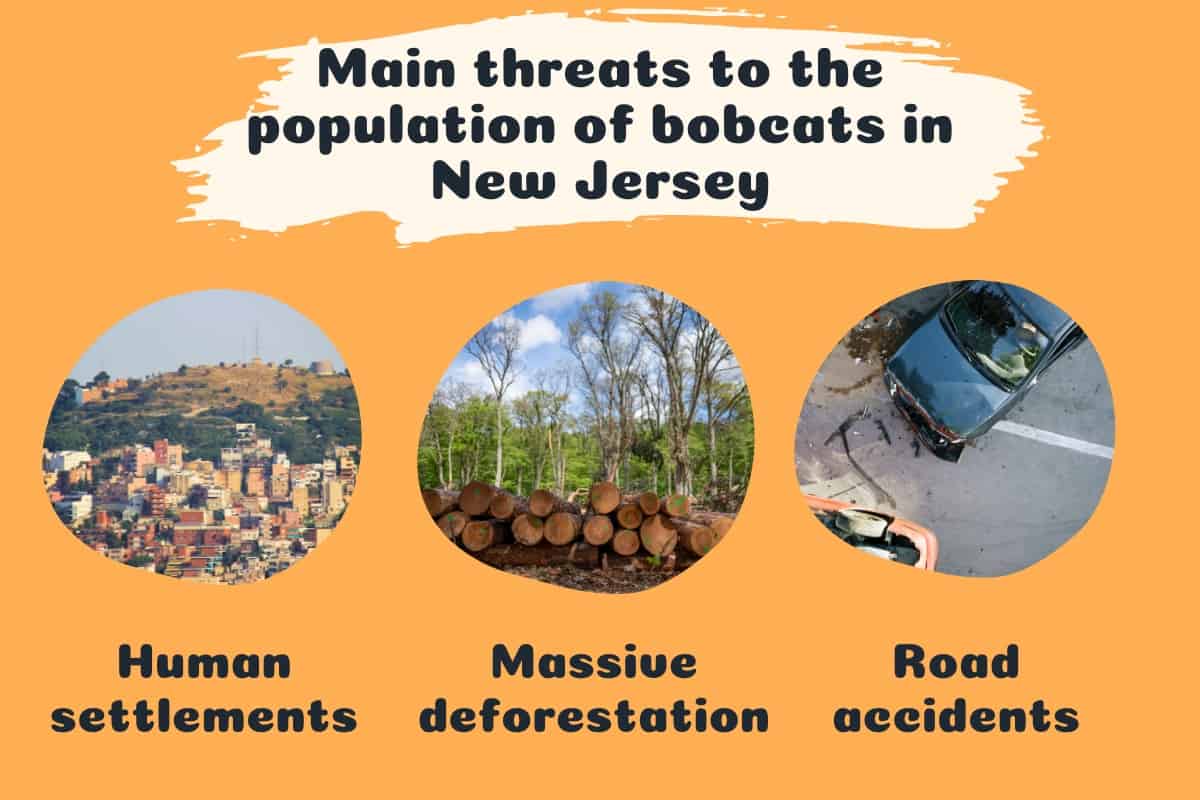
Human settlements
Human settlements have been playing the main role in threatening the population of bobcats. First, it was done by the early European settlers. They hunted bobcats on a very large scale mainly for getting the fur of these cats. These hunting and settlement things are still being practiced in many states and threatening the survival of bobcats in any particular region.
Massive deforestation
Another big threat to the population of the bobcat has come in the form of deforestation on a massive scale. Forests are being cleared for the sake of fuel, lumber, and charcoal. The land they get after deforestation is also being utilized for agriculture practices.
Road accidents
Road accidents have also been the major cause of the decline in the population of bobcats. Most of the time bobcat kittens come across vehicles on the road. These kittens died on the spot. There are very few chances that they could survive after hitting such a fast-drive vehicle.
Roadside killings of bobcats were at their peak in the 1950s and 60s. Since then it has been decreasing as many regulations were implemented. Once it was declared an endangered specie due to such large-scale killings. Now the population is recovering and also there are very few roadside accidents reported since 2015 in New Jersey.
Steps That were taken for the conservation of bobcats in New Jersey
It is extremely difficult to study bobcats due to their elusive nature. But it is essential to find out about their genetic health, distribution, and habitat availability for the recovery of these cats. In this regard, biologists have taken some vital steps in recent years for the speedy recovery of these cats. Some of these steps are given as:
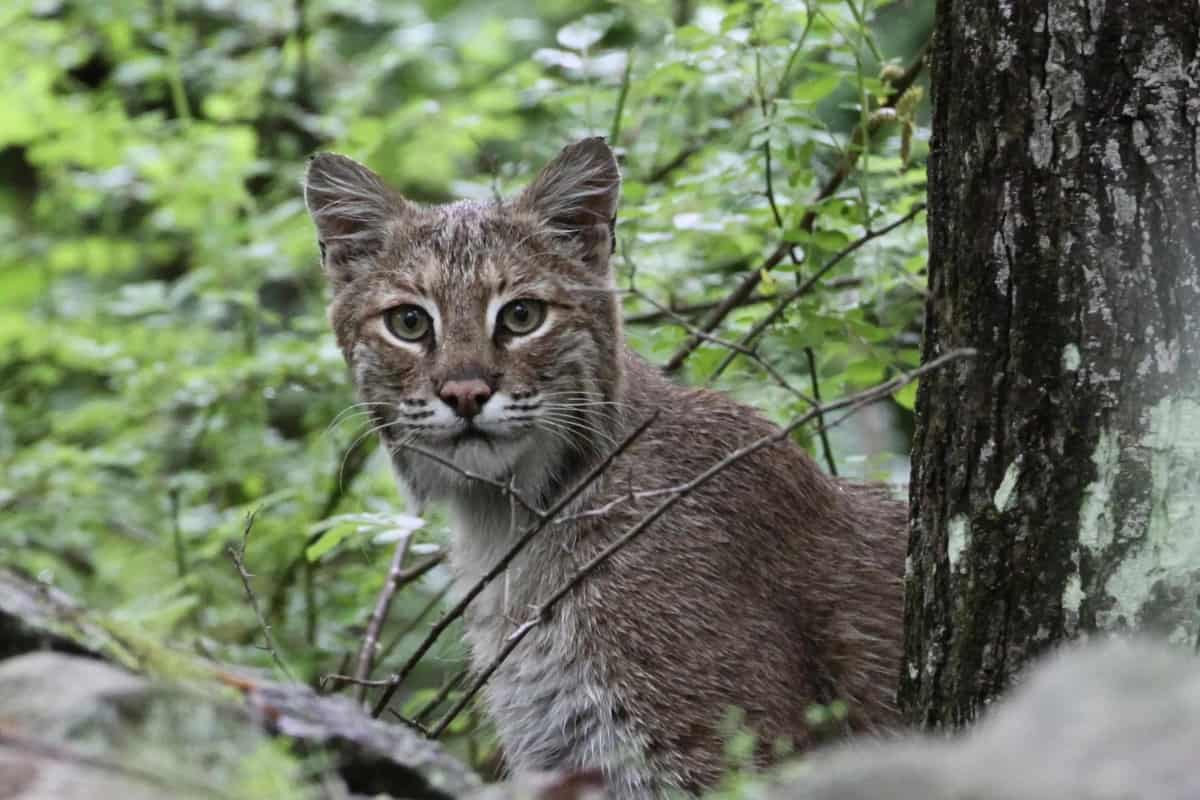
Radio telemetry
In 1997, biologists applied telemetry techniques for the tracking of bobcats. Now they have also interlinked it with the GPS collar data to track the movement of cats more precisely. In this way, they have been able to find the range and kind of their habitat. It is also greatly helpful in locating their dens and the size of their dens.
Working dogs for conservation
In 2005, a very well-known organization named ENSP coordinated with working dogs for conservation to find out about the actual genetic health and the overall population of the bobcats in any particular region. For this purpose, they deployed highly trained detection dogs named bear. With the help of these dogs, biologists have been analyzing the DNA of bobcat scats over a period of at least 12 years. It was the first time that biologists have been able to find the exact population size of the bobcats in New Jersey.
Spatial mark-recapture
The data collected throughout these years was analyzed very deeply with the help of another highly effective statistical method named spatial mark-recapture. It was then estimated that there are between 200 to 400 bobcats present in the New Jersey region.
Connecting habitat across New Jersey
Many factors are threatening the population of bobcats in New Jersey like loss of habitat, change in land use, and barriers to the free movement of bobcats between suitable and unsuitable habitats. If we don’t take some suitable steps for the recovery of these cats then there are chances of a reduction of the bobcat population in the New Jersey region.
To stop this from happening, we need to reconnect the suitable and unsuitable habitat areas of the bobcats for the safe movements of the bobcats in highly suitable landscapes. In this regard, a project named connecting habitat across New Jersey was launched in 2019 for connecting landscapes and easy terrestrial movements of wildlife.
Train volunteer
At the start of 2007, some volunteers were trained for the identification of bobcats’ tracks. These volunteers traced and documented tracks of bobcats from three different locations. This identification of tracks and research on bobcat scat has been highly helpful in getting information about the lifestyle of bobcats.
Frequently asked questions
Conclusion
Bobcats are special wild cats of North America. You can witness these cats in almost every state of the USA. When it comes to New Jersey, there are many predictions, opinions, and theories about the presence of bobcats in New Jersey. In this article, we have explained this issue in detail. After going through this article, you can truly ascertain the exact location of bobcats in New Jersey. In simple words, these cats were enlisted as endangered species but now they are recovering very fast especially in the Northern side of New Jersey.

Izzy is an experienced ranch worker who has a passion for exploring nature and getting up close to wildlife. With her connections to various animal organizations, Izzy is well-versed in animal care and rehabilitation.

